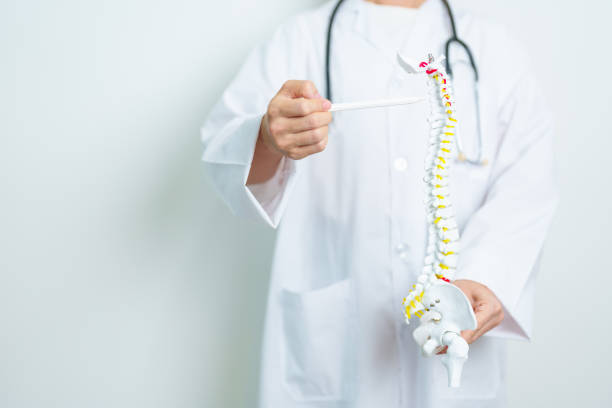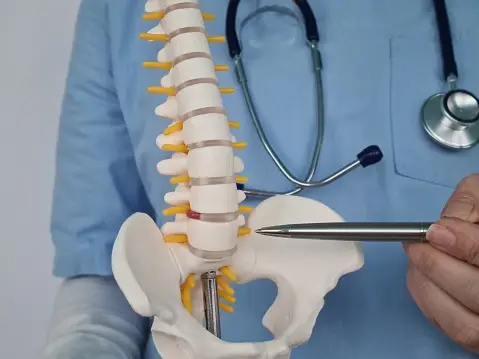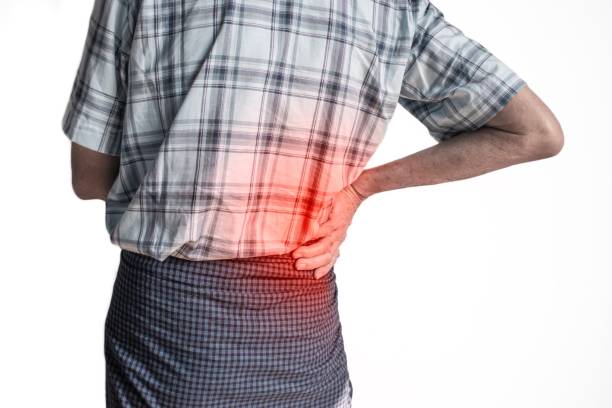Degenerative Disc Disease (DDD) is a condition that affects the intervertebral discs of the spine, leading to pain, reduced mobility, and other related symptoms. Despite its name, degenerative disc disease is not actually a disease but rather a natural part of the aging process. Over time, the discs that act as cushions between the vertebrae of the spine can wear down, lose their flexibility, and become less effective at absorbing shock.
This degeneration can cause the discs to become thinner and less hydrated, leading to discomfort and potential complications such as herniated discs or spinal stenosis. Understanding the nature of DDD, its causes, symptoms, and treatment options is crucial for managing the condition and maintaining spinal health. This introduction explores the key aspects of degenerative disc disease, providing a foundational understanding of its impact on the spine and overall well-being.
Table of Contents
Symptoms of Degenerative Disc Disease

Degenerative Disc Disease (DDD) can manifest through a variety of symptoms, which can range in severity and affect different parts of the spine. Here are the common symptoms associated with DDD:
1. Pain
- Chronic Back or Neck Pain: Persistent pain in the lower back (lumbar spine) or neck (cervical spine) is the most common symptom. This pain can vary from mild to severe.
- Radiating Pain: Pain that spreads to the buttocks, thighs, or even down to the legs (sciatica) if the lumbar spine is affected, or to the shoulders and arms if the cervical spine is involved.
2. Increased Pain with Certain Activities
- Bending or Twisting: Activities that involve bending or twisting can exacerbate pain.
- Sitting: Prolonged sitting, especially in a slouched position, can increase discomfort.
- Lifting: Lifting heavy objects or improper lifting techniques can worsen pain.
3. Pain Relief with Specific Positions or Movements
- Lying Down: Pain often decreases when lying down, which relieves pressure on the spine.
- Walking or Moving: Some individuals find relief with light activities or walking.
4. Stiffness
- Morning Stiffness: Stiffness in the back or neck, especially upon waking, which may improve with movement throughout the day.
- Limited Range of Motion: Reduced flexibility and difficulty bending or turning.
5. Numbness and Tingling
- Peripheral Neuropathy: Numbness, tingling, or a “pins and needles” sensation in the extremities. For lumbar DDD, this could affect the legs and feet, and for cervical DDD, the arms and hands.
6. Muscle Weakness
- Weakness in the Limbs: Reduced strength in the legs or arms, depending on the location of the affected disc.
7. Flare-Ups
- Episodes of Severe Pain: Periodic episodes where symptoms intensify, often triggered by specific activities or movements.
8. Crepitus
- Grinding Sensation: A sensation of grinding or popping in the spine during movement.
9. Decreased Functionality
- Impact on Daily Activities: Difficulty performing everyday tasks due to pain and limited mobility.
While the symptoms of Degenerative Disc Disease can vary, they often include chronic pain, stiffness, and reduced functionality. The condition can significantly impact daily life, making it essential for individuals to seek medical advice for appropriate diagnosis and management. Early intervention and tailored treatment plans can help alleviate symptoms and improve quality of life for those affected by DDD.
Causes of Degenerative Disc Disease

Degenerative Disc Disease (DDD) is primarily caused by the natural aging process, but several factors can contribute to or accelerate the degeneration of intervertebral discs. Here are the key causes of DDD:
1. Aging
- Natural Wear and Tear: As we age, the intervertebral discs lose hydration and elasticity, making them less effective as shock absorbers. This process can start as early as the age of 30 and progresses with time.
2. Genetics
- Family History: Genetic predisposition can play a significant role in the development of DDD. If close family members have experienced DDD, the likelihood of developing the condition increases.
3. Disc Dehydration
- Loss of Fluid Content: Healthy discs are composed of a high percentage of water. Over time, the discs lose water content, which reduces their ability to cushion the vertebrae, leading to increased stress and wear.
4. Repetitive Stress and Overuse
- Occupational Hazards: Jobs that involve heavy lifting, repetitive motions, or prolonged sitting can accelerate disc degeneration.
- High-Impact Activities: Activities that place excessive stress on the spine, such as certain sports or physically demanding tasks, can contribute to DDD.
5. Injury or Trauma
- Spinal Injuries: Accidents or injuries that damage the spine can initiate or accelerate the degenerative process. Even minor injuries can have a cumulative effect over time.
6. Obesity
- Excess Weight: Carrying extra weight places additional stress on the spine, particularly on the lower back, which can hasten the degeneration of the discs.
7. Smoking
- Reduced Blood Supply: Smoking can decrease blood flow to the discs, depriving them of essential nutrients and oxygen needed for repair and maintenance. This can accelerate degeneration.
8. Poor Posture and Body Mechanics
- Incorrect Posture: Poor posture, especially during prolonged sitting or standing, can place undue stress on the spinal discs.
- Improper Lifting Techniques: Lifting heavy objects without proper body mechanics can contribute to disc wear and tear.
9. Sedentary Lifestyle
- Lack of Physical Activity: A sedentary lifestyle can lead to weakened muscles that support the spine, increasing the stress on intervertebral discs.
Degenerative Disc Disease is a multifactorial condition influenced by aging, genetics, lifestyle choices, and physical activities. Understanding the various causes can help individuals adopt preventive measures, such as maintaining a healthy weight, practicing good posture, staying active, and avoiding smoking. By addressing these factors, it’s possible to slow the progression of DDD and maintain spinal health.
How Is Degenerative Disc Disease Diagnosed?

Diagnosing Degenerative Disc Disease (DDD) involves a combination of a detailed medical history, physical examination, and imaging tests. Here’s a step-by-step outline of the diagnostic process:
1. Medical History
- Symptom Description: The doctor will ask about the nature, duration, and intensity of your symptoms, such as pain, numbness, or weakness.
- Activity and Lifestyle: Information about your daily activities, occupation, physical activity levels, and any history of injury or repetitive stress.
- Family History: Discussion of any family history of spine-related conditions.
- Previous Treatments: Review of any prior treatments or interventions you have tried and their outcomes.
2. Physical Examination
- Posture and Gait: Observing your posture and the way you walk can provide clues about spine and nerve issues.
- Range of Motion: Assessing the flexibility and range of motion in your spine.
- Palpation: Feeling along your spine for areas of tenderness or abnormality.
- Neurological Exam: Testing reflexes, muscle strength, and sensation to detect any nerve involvement.
3. Imaging Tests
- X-Rays: Useful for viewing the alignment of the spine and identifying changes in the height of intervertebral discs, bone spurs, or other degenerative changes.
- Magnetic Resonance Imaging (MRI): Provides detailed images of the intervertebral discs and soft tissues, helping to identify disc dehydration, bulging, or herniation, and nerve compression.
- Computed Tomography (CT) Scan: Offers a detailed view of the spine’s bony structures and can help identify issues that might not be visible on X-rays.
- Discography: An invasive test where a contrast dye is injected into the discs to highlight any abnormalities on imaging studies. It is usually reserved for cases where surgery is being considered.
4. Additional Tests
- Electromyography (EMG) and Nerve Conduction Studies (NCS): These tests measure the electrical activity of muscles and the speed of nerve signals. They can help identify nerve damage or compression associated with DDD.
- Bone Scans: Occasionally used to rule out other conditions like infections or tumors that can cause similar symptoms.
5. Differential Diagnosis
- Excluding Other Conditions: The doctor may also perform tests to rule out other conditions that can mimic DDD, such as spinal stenosis, herniated discs, or osteoarthritis.
Diagnosing Degenerative Disc Disease is a comprehensive process that involves evaluating symptoms, conducting physical examinations, and utilizing various imaging techniques to get a detailed view of the spine’s structure and function. Early and accurate diagnosis is crucial for developing an effective treatment plan and preventing further complications. If you experience persistent back or neck pain, it is important to consult a healthcare professional for a thorough evaluation and appropriate management.
Treatments for Degenerative Disc Disease

Treating Degenerative Disc Disease (DDD) involves a combination of conservative (non-surgical) and, in some cases, surgical approaches. The goal is to manage pain, improve function, and prevent further degeneration. Here are the main treatment options:
Conservative Treatments
1. Medications
- Pain Relievers: Over-the-counter medications such as acetaminophen and nonsteroidal anti-inflammatory drugs (NSAIDs) like ibuprofen can help manage pain and reduce inflammation.
- Muscle Relaxants: These may be prescribed to alleviate muscle spasms.
- Nerve Pain Medications: Drugs such as gabapentin or pregabalin can help relieve nerve-related pain.
- Corticosteroids: Oral or injected steroids can reduce severe inflammation and pain.
2. Physical Therapy
- Exercise Programs: Tailored exercises to strengthen the core muscles, improve flexibility, and enhance posture can provide relief and support the spine.
- Stretching and Strengthening: Specific exercises to stretch tight muscles and strengthen weak ones to support the spine better.
- Manual Therapy: Techniques such as massage or spinal manipulation performed by a trained therapist.
3. Lifestyle Modifications
- Weight Management: Maintaining a healthy weight to reduce stress on the spine.
- Ergonomic Adjustments: Improving the ergonomics of workstations, chairs, and daily activities to support proper posture.
- Activity Modification: Avoiding activities that exacerbate symptoms and incorporating low-impact exercises like walking or swimming.
4. Heat and Cold Therapy
- Heat Packs: Applying heat can help relax muscles and increase blood flow.
- Cold Packs: Using cold packs can reduce inflammation and numb sore areas.
5. Alternative Therapies
- Acupuncture: This traditional Chinese medicine technique can help alleviate pain for some individuals.
- Chiropractic Care: Spinal adjustments by a chiropractor may provide relief for some people with DDD.
Interventional Treatments
1. Injections
- Epidural Steroid Injections: Steroids injected into the epidural space around the spinal nerves can reduce inflammation and pain.
- Facet Joint Injections: Injections into the small joints at each segment of the spine can provide pain relief.
Surgical Treatments
1. Discectomy
- Partial or Complete Removal: Removing the damaged portion of a disc that is pressing on a nerve to relieve pain and pressure.
2. Spinal Fusion
- Fusing Vertebrae: Joining two or more vertebrae together to eliminate motion between them and reduce pain. This can involve using bone grafts, metal rods, or screws.
3. Artificial Disc Replacement
- Disc Implants: Replacing the damaged disc with an artificial one to maintain more natural movement compared to spinal fusion.
4. Laminectomy
- Removing Part of the Vertebra: Removing a portion of the vertebra (lamina) to relieve pressure on the spinal cord or nerves.
The treatment of Degenerative Disc Disease is highly individualized, depending on the severity of symptoms, the location of the affected discs, and the patient’s overall health and lifestyle. Conservative treatments are often the first line of defense and can be very effective in managing symptoms and improving quality of life. For those who do not respond to conservative measures, surgical options are available and can provide significant relief. Collaborating with healthcare professionals to develop a personalized treatment plan is essential for effectively managing DDD and maintaining spinal health.
How to Prevent Degenerative Disc Disease Flares?

Preventing flares of Degenerative Disc Disease (DDD) involves adopting a proactive approach to spine health. Here are strategies to minimize the risk of flares and maintain overall spinal well-being:
1. Maintain Good Posture
- Ergonomic Adjustments: Ensure that your work and home environments support good posture. Use ergonomic chairs, adjust computer screens to eye level, and keep your back straight and shoulders relaxed.
- Proper Sitting Posture: Sit with your feet flat on the floor, knees at a 90-degree angle, and avoid slouching.
2. Regular Exercise
- Strengthening Exercises: Focus on exercises that strengthen the core muscles, including the back and abdominal muscles, which support the spine.
- Flexibility and Stretching: Incorporate stretching exercises to maintain flexibility in the spine and prevent stiffness.
- Low-Impact Activities: Engage in low-impact exercises like walking, swimming, and cycling to keep the spine healthy without excessive strain.
3. Weight Management
- Healthy Weight: Maintain a healthy weight to reduce stress on the spine. Excess weight, especially around the midsection, can strain the lower back.
4. Proper Lifting Techniques
- Lift with the Legs: When lifting objects, bend your knees and use your leg muscles rather than your back. Keep the object close to your body and avoid twisting while lifting.
5. Stay Hydrated
- Hydration: Drink plenty of water to keep your intervertebral discs hydrated and maintain their flexibility and cushioning properties.
6. Healthy Diet
- Balanced Nutrition: Eat a balanced diet rich in essential nutrients, including calcium and vitamin D, to support bone health and overall spine health.
7. Avoid Smoking
- Quit Smoking: Smoking reduces blood flow to the discs, which can accelerate degeneration. Quitting smoking can improve overall spine health.
8. Manage Stress
- Stress Reduction Techniques: Practice stress reduction techniques such as yoga, meditation, or deep breathing exercises to reduce muscle tension and stress on the spine.
9. Adequate Sleep
- Proper Sleep Positions: Sleep on a mattress that supports the natural curvature of your spine. Consider sleeping on your back with a pillow under your knees or on your side with a pillow between your knees.
10. Regular Check-ups
- Medical Supervision: Regular visits to a healthcare provider can help monitor your spine health and address any issues before they become serious problems.
11. Use of Support Devices
- Braces and Supports: If recommended by a healthcare provider, use back braces or supports to help stabilize the spine during activities that may put stress on your back.
12. Avoid Prolonged Sitting
- Frequent Breaks: If you have a sedentary job, take regular breaks to stand, stretch, and walk around. This can reduce pressure on the spine and improve circulation.
Preventing flares of Degenerative Disc Disease involves a combination of healthy lifestyle choices, proper body mechanics, and regular medical care. By incorporating these strategies into your daily routine, you can minimize the risk of flares, maintain a healthy spine, and enhance your overall quality of life. Consistency is key, and working with healthcare professionals to tailor these recommendations to your specific needs can provide the best outcomes.
Related Conditions
Degenerative Disc Disease (DDD) is often associated with or can lead to several related conditions that affect the spine. Understanding these related conditions is important for comprehensive management and treatment. Here are some conditions commonly associated with DDD:
1. Herniated Disc
- Description: Occurs when the inner gel-like core of the disc (nucleus pulposus) protrudes through a tear in the outer layer (annulus fibrosus), potentially compressing nearby nerves.
- Symptoms: Pain, numbness, and weakness in the affected area, often radiating down the arms or legs.
2. Spinal Stenosis
- Description: Narrowing of the spinal canal, which can compress the spinal cord and nerves.
- Symptoms: Pain, numbness, and weakness, typically in the legs or lower back, which may worsen with walking or standing and improve with sitting or leaning forward.
3. Spondylolisthesis
- Description: Occurs when one vertebra slips forward over the vertebra below it, often due to disc degeneration.
- Symptoms: Lower back pain, stiffness, and potential nerve compression leading to radiating pain, numbness, or weakness in the legs.
4. Osteoarthritis of the Spine
- Description: Degeneration of the cartilage in the facet joints of the spine, often accompanying disc degeneration.
- Symptoms: Localized pain, stiffness, and reduced range of motion, especially in the morning or after periods of inactivity.
5. Facet Joint Syndrome
- Description: Degeneration or inflammation of the facet joints, which provide stability and flexibility to the spine.
- Symptoms: Pain and stiffness in the spine, often worsening with twisting or bending movements.
6. Sciatica
- Description: A condition where the sciatic nerve is compressed, often due to a herniated disc or spinal stenosis.
- Symptoms: Sharp, burning pain radiating from the lower back down the leg, often accompanied by numbness, tingling, or muscle weakness.
7. Degenerative Scoliosis
- Description: A curvature of the spine that develops due to disc and joint degeneration, typically in older adults.
- Symptoms: Asymmetrical pain in the back, uneven shoulders or hips, and potential nerve compression symptoms.
8. Radiculopathy
- Description: Compression or irritation of the spinal nerve roots, often due to a herniated disc or spinal stenosis.
- Symptoms: Radiating pain, numbness, tingling, and weakness in the arms or legs, depending on the location of the affected nerve root.
9. Myelopathy
- Description: Compression of the spinal cord itself, which can result from severe disc degeneration or spinal stenosis.
- Symptoms: Difficulty with coordination and balance, weakness, numbness, and problems with bladder or bowel control.
10. Chronic Pain Syndrome
- Description: Persistent pain that lasts longer than the typical healing time, often associated with DDD and other chronic spine conditions.
- Symptoms: Ongoing pain, fatigue, depression, and difficulty performing daily activities.
Degenerative Disc Disease is interconnected with various other spinal conditions, each contributing to the complexity of spine health. Understanding these related conditions can aid in comprehensive diagnosis and treatment, allowing for a more targeted and effective approach to managing spine-related issues. Early detection and intervention are crucial in preventing these conditions from significantly impacting an individual’s quality of life.
Living With Degenerative Disc Disease

Living with Degenerative Disc Disease (DDD) requires ongoing management to reduce pain, maintain mobility, and improve quality of life. Here are strategies and tips for managing daily life with DDD:
1. Pain Management
- Medications: Use over-the-counter pain relievers like acetaminophen or NSAIDs, as recommended by your doctor. For severe pain, prescription medications may be necessary.
- Heat and Cold Therapy: Apply heat packs to relax muscles and improve blood flow, or use cold packs to reduce inflammation and numb pain.
- Topical Treatments: Consider using pain-relief creams or gels that contain ingredients like menthol or capsaicin.
2. Physical Activity
- Regular Exercise: Engage in low-impact exercises such as walking, swimming, or cycling to maintain flexibility and strengthen the muscles supporting the spine.
- Stretching: Incorporate daily stretching routines to improve flexibility and reduce stiffness.
- Strengthening Exercises: Focus on core-strengthening exercises to support the spine and reduce stress on the discs.
3. Lifestyle Adjustments
- Healthy Diet: Maintain a balanced diet rich in nutrients that support bone and joint health, such as calcium, vitamin D, and omega-3 fatty acids.
- Weight Management: Keep a healthy weight to reduce the load on your spine.
- Quit Smoking: Smoking can reduce blood flow to the discs and accelerate degeneration.
4. Ergonomic Modifications
- Proper Posture: Practice good posture when sitting, standing, and lifting. Use ergonomic furniture to support your spine.
- Workstation Setup: Adjust your work environment to reduce strain on your back. Ensure your chair provides proper lumbar support, and your computer screen is at eye level.
5. Sleep Hygiene
- Supportive Mattress: Use a mattress that provides good support and maintains the natural alignment of your spine.
- Sleep Positions: Find a sleep position that reduces strain on your back, such as sleeping on your back with a pillow under your knees or on your side with a pillow between your knees.
6. Stress Management
- Relaxation Techniques: Practice relaxation techniques such as deep breathing, meditation, or yoga to reduce stress and muscle tension.
- Counseling: Consider psychological counseling or cognitive-behavioral therapy (CBT) if chronic pain leads to depression or anxiety.
7. Alternative Therapies
- Acupuncture: May provide pain relief for some individuals with DDD.
- Chiropractic Care: Spinal adjustments by a chiropractor can help alleviate pain for some people.
- Massage Therapy: Helps to relax muscles, improve circulation, and reduce pain.
8. Medical Interventions
- Physical Therapy: Work with a physical therapist to develop a customized exercise and stretching plan.
- Injections: Corticosteroid injections can reduce inflammation and pain in specific areas.
- Surgery: In severe cases, surgical options such as spinal fusion or artificial disc replacement may be considered to alleviate pain and improve function.
9. Support Systems
- Support Groups: Join support groups for individuals with DDD to share experiences, advice, and encouragement.
- Family and Friends: Lean on your support network for help with daily activities and emotional support.
Living with Degenerative Disc Disease involves a multifaceted approach to managing symptoms and maintaining a high quality of life. By incorporating a combination of medical treatments, lifestyle adjustments, physical activity, and support, individuals with DDD can effectively manage their condition and continue to lead active, fulfilling lives. Regular communication with healthcare providers is crucial to monitor the condition and adjust treatment plans as needed.
Conclusion
In conclusion, Degenerative Disc Disease (DDD) is a common condition that affects the spine, particularly as people age. It involves the gradual deterioration of intervertebral discs, leading to symptoms such as back pain, stiffness, and potential nerve compression. While DDD is a chronic condition that cannot be cured, its symptoms can often be managed effectively through a combination of conservative treatments like medications, physical therapy, and lifestyle adjustments.
Managing DDD requires a proactive approach to maintain spine health and quality of life. This includes practicing good posture, engaging in regular exercise to strengthen supporting muscles, and maintaining a healthy weight. Lifestyle modifications such as ergonomic adjustments at work and home, proper lifting techniques, and smoking cessation can also play crucial roles in reducing symptoms and preventing flare-ups.
For those with more severe symptoms, medical interventions like injections or, in rare cases, surgery may be recommended to alleviate pain and improve mobility. It’s essential for individuals with DDD to work closely with healthcare professionals to develop a personalized treatment plan that addresses their specific needs and goals.
By understanding the factors contributing to DDD, adopting preventive measures, and adhering to recommended treatments, individuals can effectively manage their condition and optimize their overall spinal health. Regular monitoring and adjustments to treatment as necessary can help minimize the impact of DDD on daily life, allowing individuals to lead active and fulfilling lifestyles despite the challenges posed by this condition.
